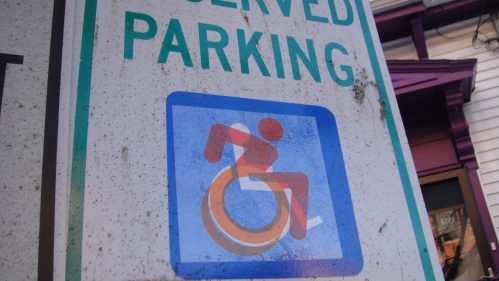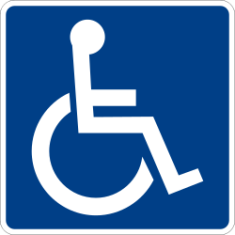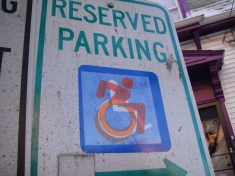From Street Art to Emoji: The History of the International Symbol of Access (ISA)

Today is World Emoji Day, and a great time to think about the power of symbols.
If you’re of a certain age, you may remember this icon as the prevalent symbol of disability:

Known as the International Symbol of Access (ISA) it was designed in the 1960s by Susanne Koefoed, a Danish design student. It was designed to clearly and universally identify a growing number of accessible facilities worldwide. It was adopted as a standard symbol by the United Nations in 1974 and in the United States upon the signing of the Americans with Disabilities Act (ADA) in July 1990.
Fast-forward to 2010, design activists Sara Hendren and Brian Glenney started thinking about ways to make their Boston neighborhoods more inclusive. Guerrilla-style, they began using vinyl stickers to adapt the existing ISA icon wherever they found it with a more engaged and active design. Their adapted design asks viewers to reimagine the once-upright, static person as someone with their arms back, actively propelling themselves forward. By extension, they were asking people to reconsider how they viewed people with disabilities.

While the difference in design may seem subtle to some, it isn’t to people in disability communities. The person in the new ISA wheelchair icon isn’t passively waiting for someone to come help them move forward. This person is actively moving themselves forward, literally and figuratively, which resonated with people looking to challenge existing stereotypes about people with disabilities.
What started as a Boston street art campaign became something much larger. Hendren and Glenney partnered with graphic designer Tim Ferguson Sauder to design an official icon in line with professional standards. Through the Accessible Icon Project, the team released the icon to the public domain, where it has circulated free-of-charge worldwide.
The Hendren and Glenney icon even replaced the original ISA icon as the wheelchair emoji in 2016. Many additional disability-themed emojis were added to cellphones in 2019, as a part of a movement to bring more diversity to the digital landscape. Representation matters, and seemingly subtle differences in design can speak volumes about prevalent biases and assumptions about what disability is and looks like.
At the Community Living Education Project, we work with individual with intellectual and developmental disabilities and their families/caregivers to create lives of choice. This means living where and how someone wants and pursuing their own goals and aspirations. With the right supports in place, we know people with disabilities are fully capable of embodying the new ISA -- propelling themselves forward and determining their own life course.


